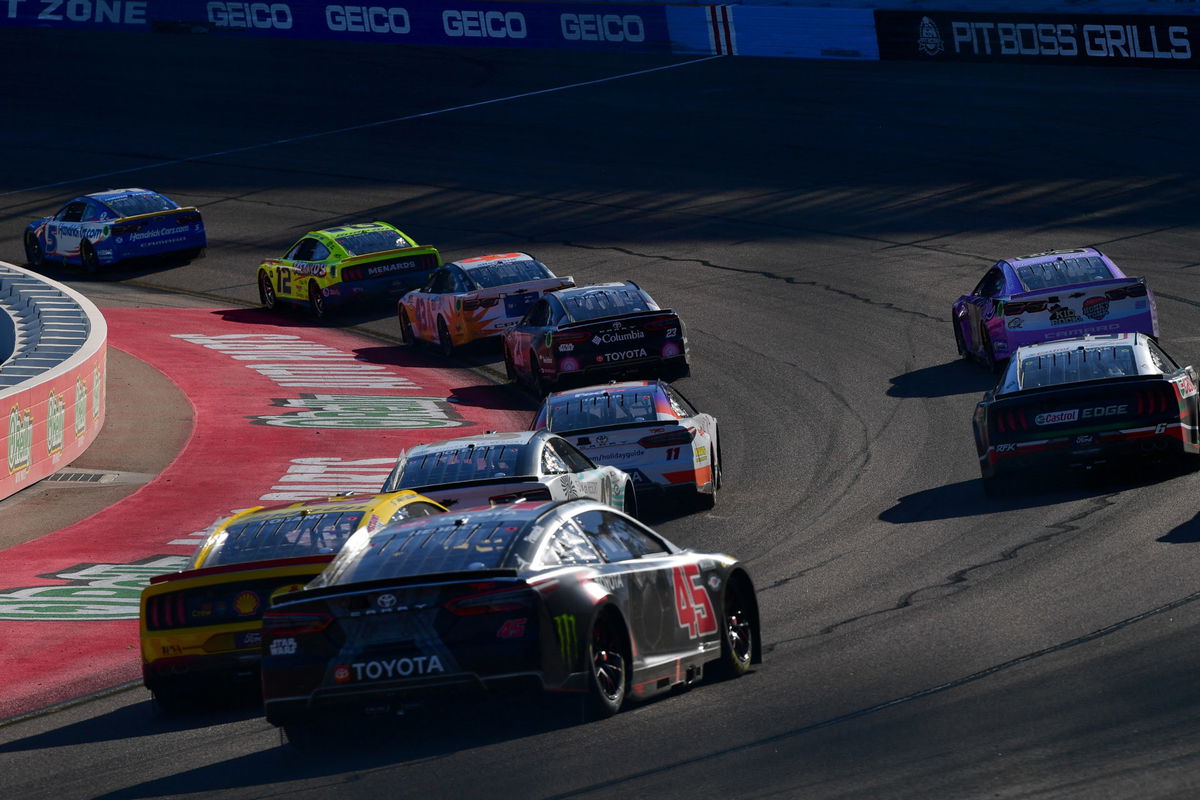
USA Today via Reuters
Nov 5, 2023; Avondale, Arizona, USA; NASCAR Cup Series driver Kyle Larson (5) leads driver Ryan Blaney (12) and a group during the Cup Series Championship race at Phoenix Raceway. Mandatory Credit: Gary A. Vasquez-USA TODAY Sports

USA Today via Reuters
Nov 5, 2023; Avondale, Arizona, USA; NASCAR Cup Series driver Kyle Larson (5) leads driver Ryan Blaney (12) and a group during the Cup Series Championship race at Phoenix Raceway. Mandatory Credit: Gary A. Vasquez-USA TODAY Sports
NASCAR’s never been shy about embracing tech, and the sport’s been quietly weaving cutting-edge tools into its fabric for years. Think about this: a remote control center in Concord, North Carolina, where officials huddle around “The Wall,” a 32-foot-wide LED beast pumping out 200 camera angles, onboard feeds, driver audio, and real-time radio transcripts. Up to 24 officials use this setup to dissect incidents with razor-sharp clarity, making calls faster and squashing controversial delays. It’s like mission control for racing, turning chaos into precision.
Watch What’s Trending Now!
On the track, teams like Richard Childress Racing are leaning hard into AI. Partnering with Lenovo, RCR’s pit stops are now a tech showcase. Overhead cameras and in-car transponders track fuel flow to within 0.03 seconds, letting strategists nail refueling timing. Augmented reality displays and GoPro lug-nut checks are in the works, all to shave seconds in the pit road frenzy. It’s not just about speed—it’s about outsmarting the competition with data.
Even fans are feeling the tech wave. NASCAR’s revamped Tracks app dishes out an AI-driven timeline, narrating race moments as they unfold, paired with sub-second leaderboard updates. Camera modes like Leader and “Most Popular” let fans zero in on top drivers or trending action. From officiating to pit stops to fan apps, NASCAR’s tech game is leveling up, making every lap smarter and slicker. Well, this weekend in Mexico will also feature another technological advancement.
ADVERTISEMENT
Camb.AI’s game-changing translation pilot
NASCAR’s Viva Mexico 250 at Autódromo Hermanos Rodríguez is breaking new ground with Camb.AI’s AI-powered language translation platform. For the first time, Motor Racing Network’s radio broadcasts will get live Spanish translations, streamed via the NASCAR mobile app and website alongside the English feed. NASCAR is calling it a “significant step in making NASCAR content more inclusive and accessible,” a pilot that could reshape how the sport reaches global fans.
Artificial intelligence platform @useCamb_AI will supply live, Spanish-language translations of @MRNRadio‘s broadcasts for the first time with this weekend’s @NASCARMexico_ event, as part of a pilot with the racing property, per SBJ’s @Rob_Schaef. https://t.co/kKwml4vyii
— Adam Stern (@A_S12) June 13, 2025
ADVERTISEMENT
Camb.AI’s tech is a two-punch combo: one AI model converts speech to text, while another turns that text back into speech, mimicking the original speaker’s emotional vibe. Supporting over 140 languages, it’s a real-time marvel. This marks Camb.AI’s first dance with NASCAR, sparked by their role in the Comcast NBCUniversal Sports Tech Accelerator. The company, one of 2025’s top 10 innovative sports tech firms, has already worked with MLS, LFP, and Tennis Australia, with more pro teams in their sights.
The pilot’s a big deal for NASCAR, which owns MRN and sees Spanish-language coverage as a gateway to new audiences. With Mexico City hosting the Cup Series’ first international points race since 1958, the timing’s perfect. If fans embrace it, NASCAR plans to roll out more Spanish content across platforms. Camb.AI’s tech could make the sport feel closer to home for millions, turning a historic race into a global conversation.
ADVERTISEMENT
Tech powers NASCAR’s Mexico City haulers
NASCAR’s 2,000-mile trek to Mexico City wasn’t just a logistical marathon—it was a tech-fueled triumph. Samsara, a leader in connected operations, sponsored the June 13-15 Xfinity and Cup races, bringing AI and data smarts to the hauler hustle. With teams covering up to 120,000 kilometers a year hauling cars, engines, and tools, Samsara’s tech ensured every rig rolled into Autódromo Hermanos Rodríguez race-ready.
Samsara’s real-time monitoring, smart cameras, and predictive maintenance kept haulers humming, freeing teams like Richard Childress Racing to focus on race prep. Since 2023, Samsara’s backed RCR’s Jesse Love, who’s gunning for an Xfinity championship boost in Mexico. “Real-time monitoring and advanced data analytics allow a team like RCR to focus on race strategy while technology handles every kilometer,” Lopez said. The tech cut risks, streamlined routes, and saved fuel, blending efficiency with eco-friendly vibes.
ADVERTISEMENT
This wasn’t just about getting trucks across the border—it was about proving tech can tame NASCAR’s toughest challenges. From Laredo’s X-ray scans to Mexico City’s pit lane, Samsara’s tools gave the convoy unmatched visibility, making the historic Viva Mexico 250 a showcase for innovation, both on and off the track.
ADVERTISEMENT
ADVERTISEMENT
ADVERTISEMENT

